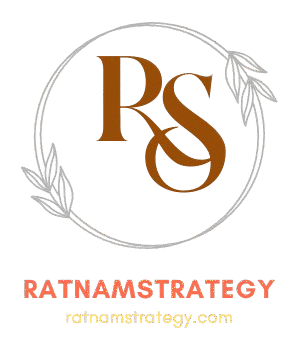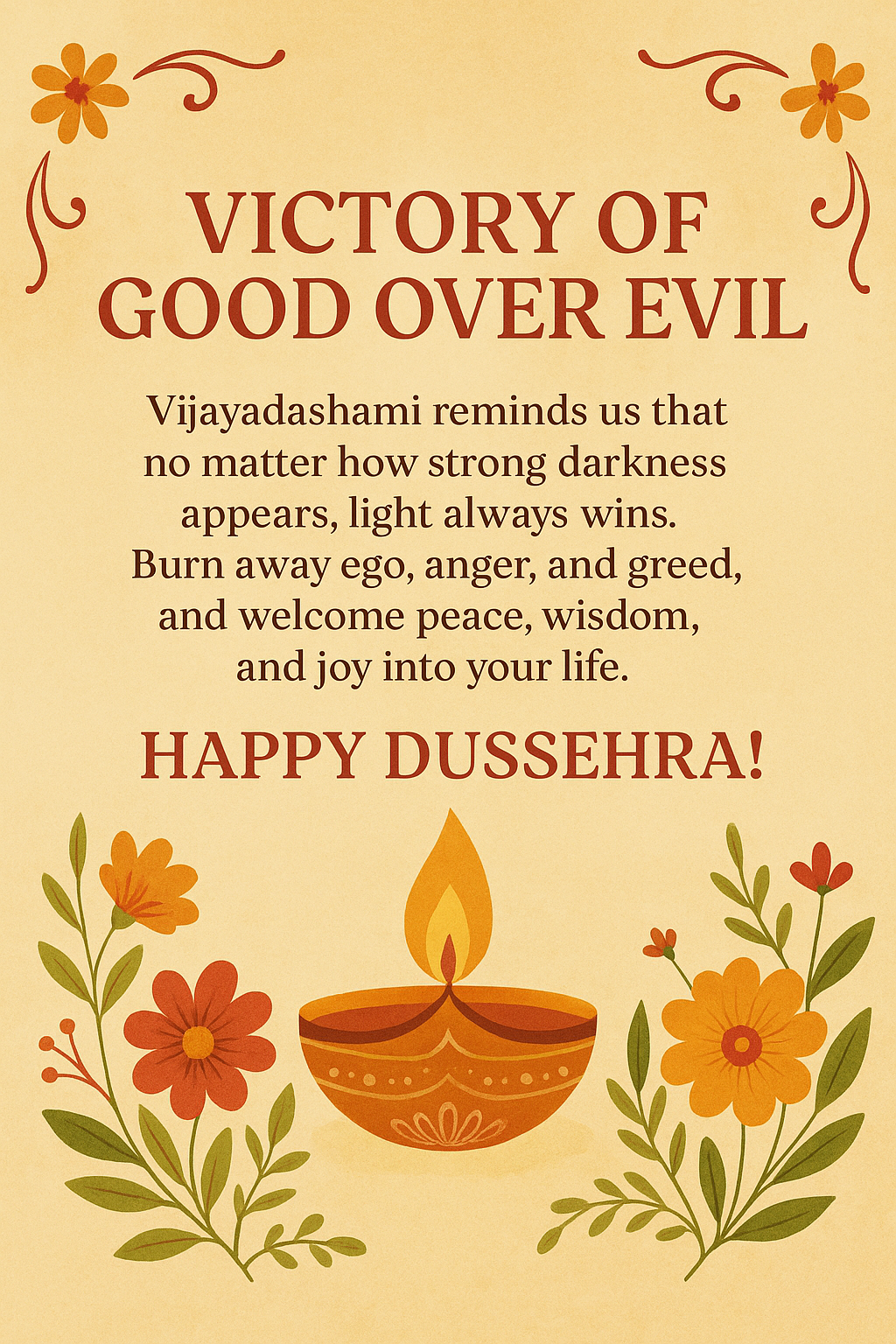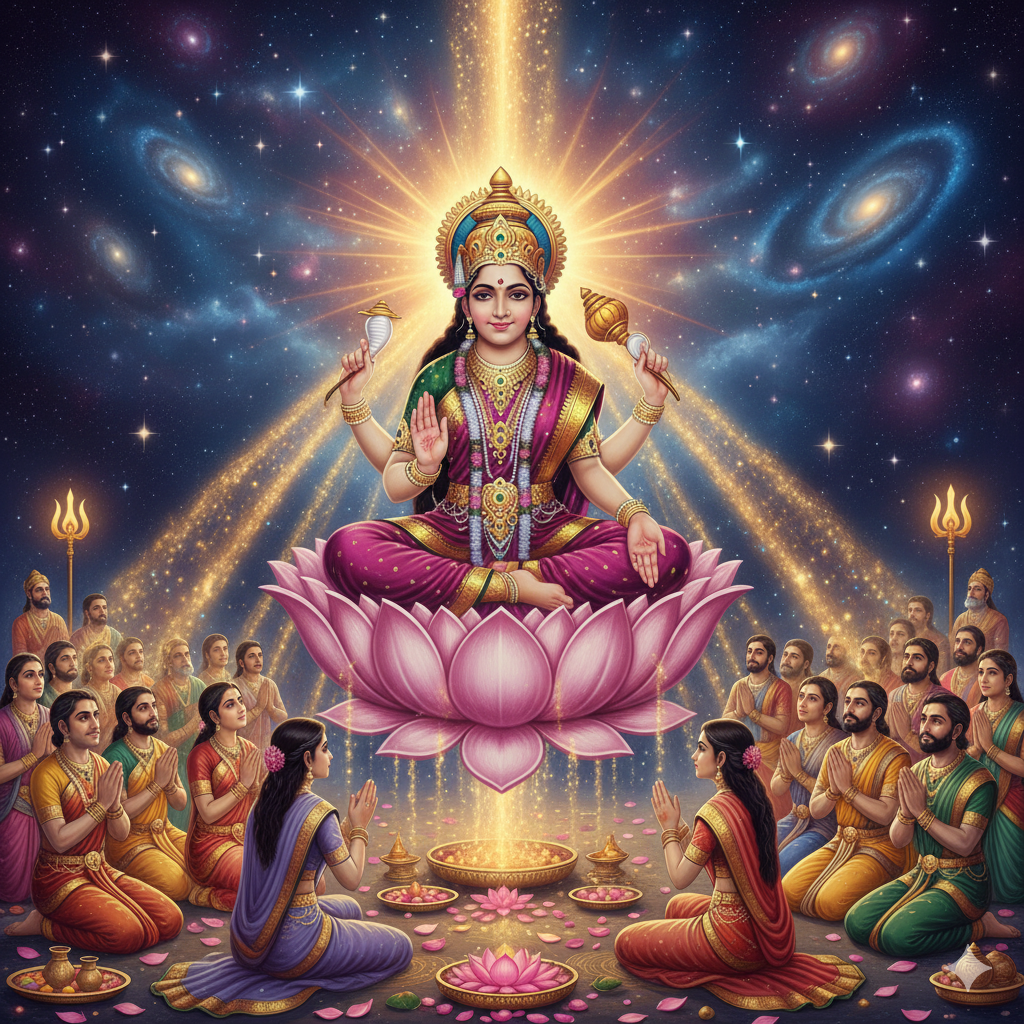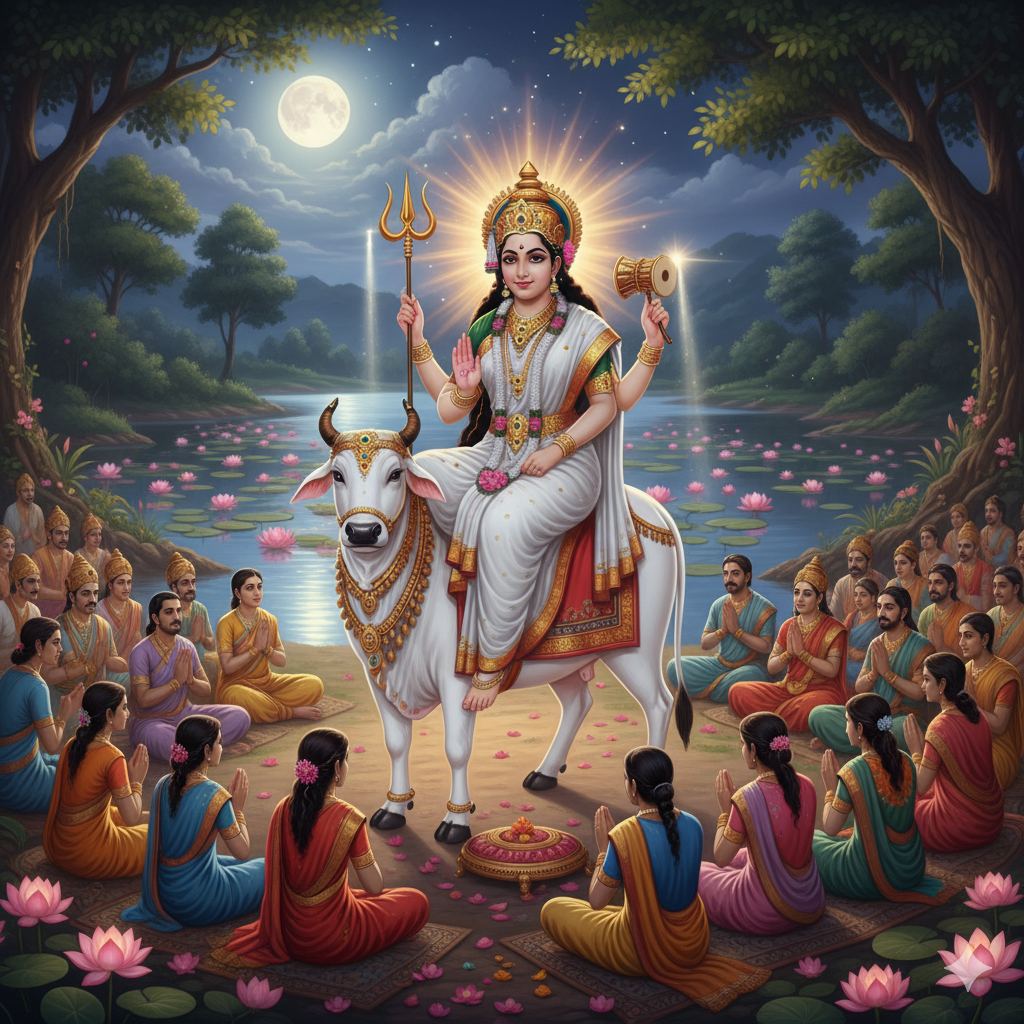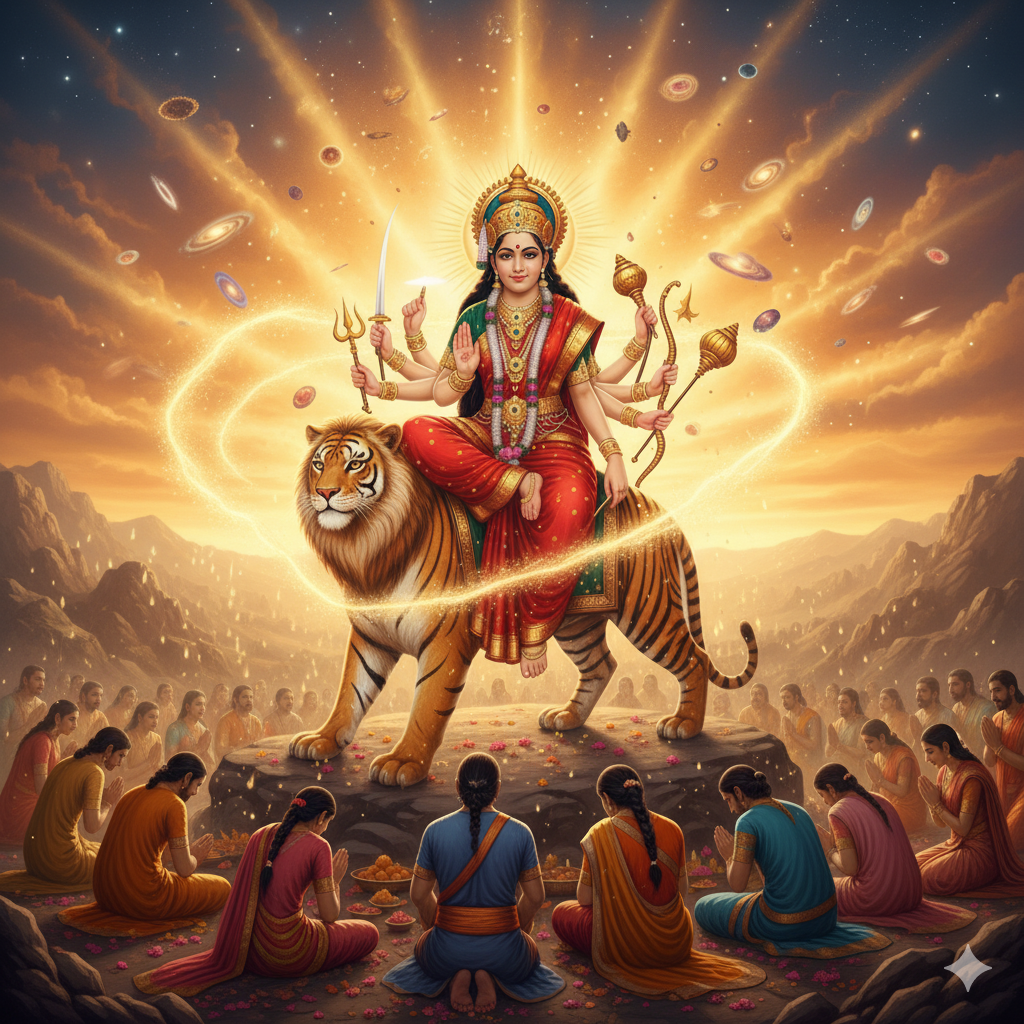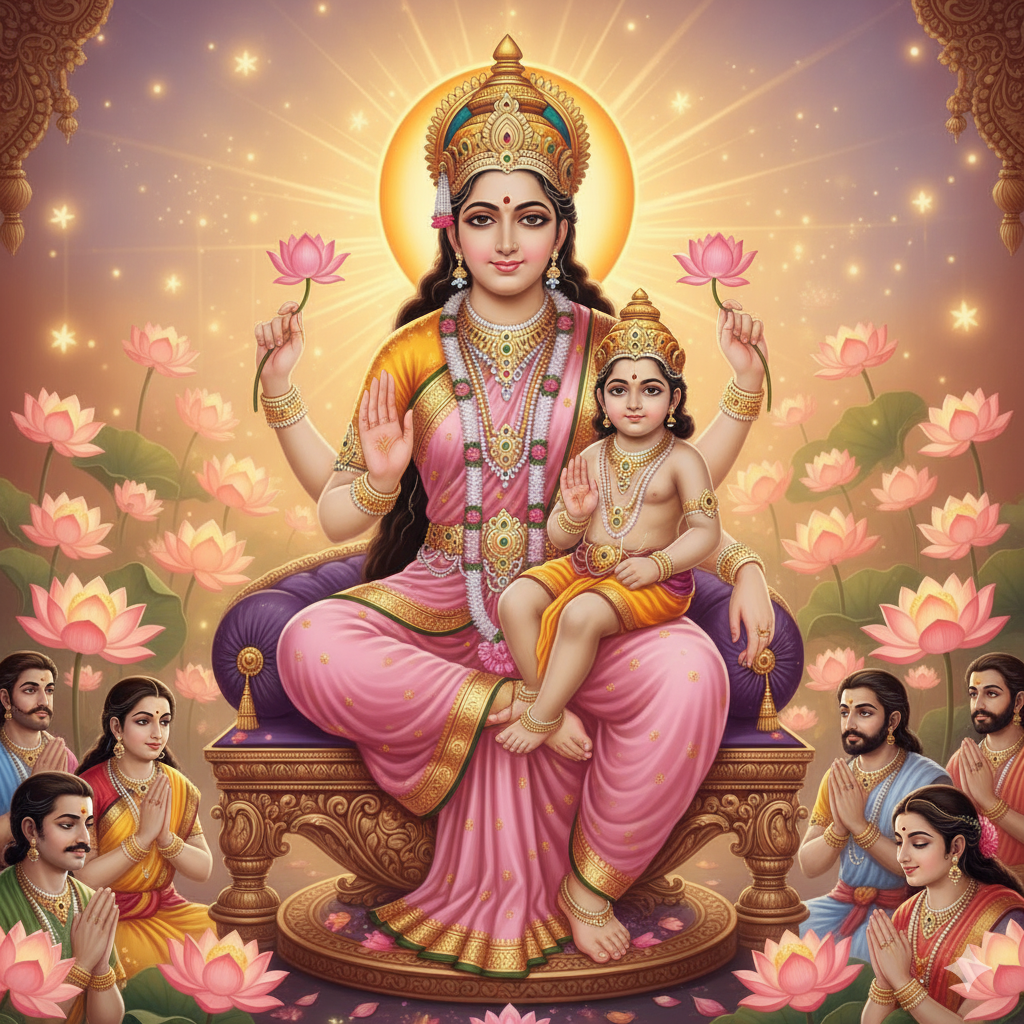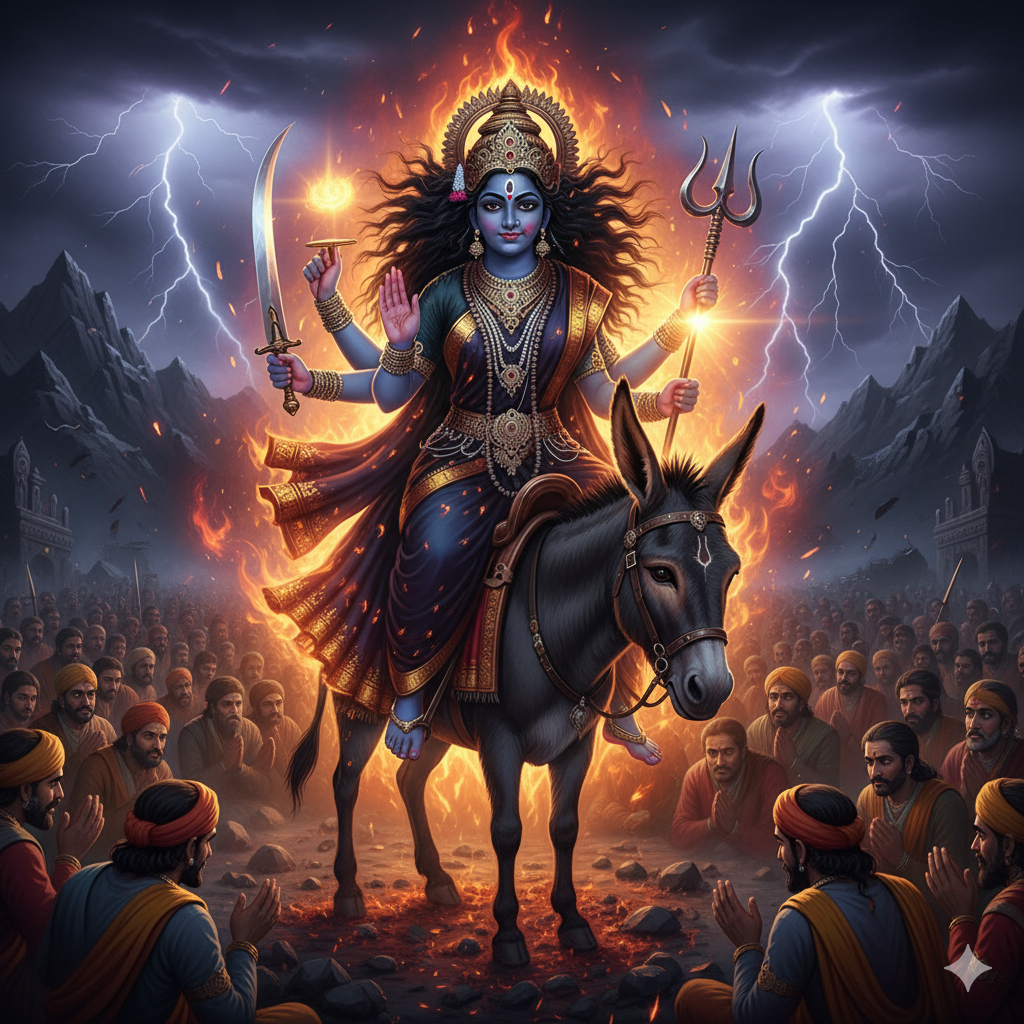
Introduction
Maa Kalaratri – Day 7 of Navratri : Navratri, the nine nights dedicated to the worship of Goddess Durga in her nine divine forms, reaches a powerful and transformative stage on the seventh day. This day is devoted to Maa Kalaratri, the most fierce and fearsome manifestation of the Goddess, who is revered as the destroyer of darkness, ignorance, and evil forces.
Her very name – Kala meaning time or death, and Ratri meaning night or darkness – symbolizes her role as the one who eliminates the ultimate fear of death and liberates devotees from negativity. Though her form appears terrifying, Maa Kalaratri is deeply compassionate toward her devotees, showering them with protection, courage, and inner strength.
She is believed to have slain the two notorious demons Chanda and Munda, earning her the title Chamunda, and later destroyed the demon Raktabeeja, who could multiply himself with every drop of blood spilled. Maa Kalaratri is also called Shubhamkari, the one who bestows auspiciousness and removes obstacles from the path of her devotees.
On the seventh day of Navratri, devotees perform rituals, chant mantras, and meditate upon Maa Kalaratri to conquer fear, overcome hardships, and invite positivity into their lives. Her blessings grant not only physical protection but also spiritual liberation.
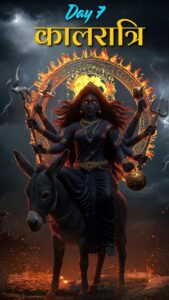
The Appearance of Arti of Maa Kalaratri
Maa Kalaratri is perhaps the most fearsome and awe-inspiring form of Goddess Durga. Yet, behind her terrifying appearance lies a mother’s love and compassion for her devotees.
- Complexion: She is depicted with a dark black complexion, resembling the vast and endless night sky.
- Hair: Her hair is long, unkempt, and flowing wildly, symbolizing freedom and fierce energy.
- Eyes & Breath: Her eyes are as bright as the universe, glowing like lightning, while her breath is said to ignite flames.
- Hands & Weapons:
- In her right hand, she shows the Abhaya Mudra (gesture of fearlessness).
- In the other right hand, she shows the Varada Mudra (gesture of granting blessings).
- In her left hands, she holds a Vajra (thunderbolt) and a scimitar (sword).
- Mount: She rides a donkey, which represents humility and simplicity, showing that true power is beyond material grandeur.
Though her form strikes fear, she is lovingly called Shubhamkari, meaning the one who grants auspiciousness and removes suffering. Her appearance teaches that outward fear can often conceal inner kindness and blessings.
Symbolism of Maa Kalaratri
Every aspect of Maa Kalaratri’s appearance and powers carries a spiritual meaning:
- Dark Complexion: Symbolizes the vastness of the universe and the destruction of ignorance.
- Unkempt Hair: Represents freedom from social constraints and the raw, untamed power of nature.
- Fire-Breathing: Signifies the purification of negative energies and burning away of ego.
- Weapons: The Vajra stands for strength and firmness of will, while the sword represents the power of knowledge to cut through illusion.
- Abhaya & Varada Mudra: Show her protective and benevolent nature—destroyer of fear and granter of wishes.
- Donkey (Her Vahana): Represents humility, reminding devotees that divinity is not about luxury but spiritual strength. Puja Vidhi for Maa Kalaratri (Day 7 of Navratri)
On the seventh day of Navratri, devotees worship Maa Kalaratri with utmost devotion and sincerity.
the step-by-step puja procedure (vidhi):
Morning Preparations
- Wake up before sunrise, bathe, and wear white or blue colored clothes, considered auspicious for Day 7.
- Clean your home and puja space, as purity invites divine energy.
Ghatasthapana (Kalash Puja)
- The Kalash (installed on Day 1) is worshipped again on this day.
- Offer flowers, kumkum, turmeric, and rice grains at the base of the Kalash.
- Light a ghee lamp and incense sticks.
Invocation of Maa Kalaratri
- Place an image or idol of Maa Kalaratri on a clean cloth.
- Decorate with red, maroon, or blue flowers.
- Offer jasmine flowers, which are especially dear to her.
Chanting the Mantra
Recite her mantra with devotion:
Om Devi Kalaratryai Namah
Chanting this mantra removes fear and negative energies.
Offerings (Naivedya)
- Offer jaggery, honey, or sweets made of jaggery as prasad, as Maa Kalaratri is believed to be fond of these.
- Fruits, coconut, and dry fruits may also be offered.
Aarti and Prayers
- Perform aarti with camphor or ghee lamp, singing devotional songs dedicated to Maa Kalaratri.
- Pray sincerely, asking for courage, protection, and removal of fear from your life.
Charity and Acts of Kindness
- Offering food, clothes, or donations to the poor is considered highly auspicious on this day.
- Feeding little girls (Kanya Puja) is also performed to honor the divine feminine. Spiritual Significance of Worshipping Maa Kalaratri:
- Removes fear, obstacles, and negative energies.
- Protects against accidents, dangers, and evil influences.
- Blesses devotees with courage, confidence, and spiritual strength.
- Frees one from the cycle of birth and death.
Legends of Maa Kalaratri – Day 7 of Navratri
Maa Kalaratri’s stories are found in various Puranas, where she appears as the fiercest form of Shakti to destroy demons and restore balance.
1. The Slaying of Shumbha and Nishumbha’s Army
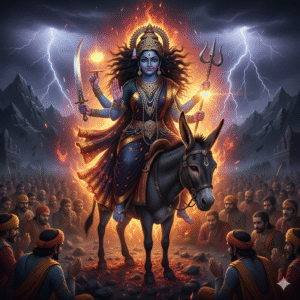
According to the Devi Mahatmyam (Markandeya Purana), when the demon brothers Shumbha and Nishumbha conquered the heavens, they harassed the gods and captured their kingdom. The Devas prayed to Goddess Durga for help.
When Durga appeared in her magnificent form, the demons sent their generals Chanda and Munda to fight her. From her forehead emerged a dark, terrifying form—Maa Kalaratri. She roared so loudly that the earth trembled, and in battle, she killed both Chanda and Munda.
This earned her the name Chamunda (slayer of Chanda and Munda).
2. The Battle with Raktabeeja
The demon Raktabeeja had a boon that every drop of his blood falling on the ground would create another demon like him. When the gods tried to kill him, his blood multiplied into thousands of clones, making him invincible.
Maa Kalaratri charged into battle, drinking every drop of Raktabeeja’s blood before it touched the earth. She swallowed his clones and finally destroyed him, saving the universe from destruction.
This story highlights her role as the ultimate destroyer of evil, who conquers even the most undefeatable forces.
3. Symbolic Story of Inner Darkness
On a spiritual level, Maa Kalaratri’s legends symbolize the destruction of inner demons—fear, ignorance, ego, anger, and greed. Just as she destroyed demons in battle, she helps devotees conquer their own mental darkness and achieve spiritual awakening.
Benefits of Worshipping Maa Kalaratri – Day 7 of Navratri
Worshipping Maa Kalaratri on the 7th day of Navratri is believed to bring numerous blessings:
1. Removal of Fear
She is the goddess of courage and protection. Worshipping her removes deep-rooted fears, phobias, and anxieties from life.
2. Protection from Negativity
Her presence shields devotees from evil spirits, negative energies, accidents, and misfortunes.
3. Success and Strength
Maa Kalaratri blesses devotees with determination, strength, and resilience to overcome challenges in both personal and professional life.
4. Spiritual Growth
She helps seekers transcend material attachments and move closer to liberation (moksha).
5. Peace and Positivity
Though her form is fierce, her blessings bring peace, positivity, and auspiciousness (hence the name Shubhamkari).
6. Astrological Relief
It is believed that worshipping Maa Kalaratri reduces the malefic effects of Saturn (Shani) and grants relief from hardships caused by planetary influences.
Maa Kalaratri – Day 7 of Navratri
On Day 7 of Navratri:
- Devotees pray for courage, health, and protection.
- People battling fears, enemies, or challenges turn to Maa Kalaratri for strength.
- Sadhaks and spiritual seekers meditate on her to gain mystical powers (siddhis) and divine wisdom.
Her day represents a crucial point in Navratri when the worshiper moves beyond material desires and seeks inner transformation and liberation.
Mantras and Prayers of Maa Kalaratri – Day 7 of Navratri
Maa Kalaratri is worshipped with powerful mantras that invoke her protection and blessings. Chanting these mantras during Navratri helps devotees remove fear, destroy negativity, and attain inner peace.
- Main Mantra of Maa Kalaratri
Main Mantra of Maa Kalaratri
- Om Devi Kalaratryai Namah
Meaning: I bow to the divine Goddess Kalaratri, the remover of fear and destroyer of evil.
This mantra is the Mool Mantra (root chant) for her puja and should be recited 108 times.
Beej Mantra
- Om Aim Hreem Kleem Chamundayai Vichche
Meaning: This sacred chant invokes the cosmic feminine energy of Chamunda (a form of Maa Kalaratri). It destroys negative energies, grants protection, and blesses the devotee with courage.
Dhyana Mantra (Meditation Verse)
Eka Veni Japa Karna Pura Nakna Kharasthita |
Lamboshti Karnika Karni Tailabhyakta Sharirini ||
Vamapadollasalloh Lata Kantaka Bhushana |
Vardhan Murdha Dvaja Krishna Kalaratri Bhayankari ||
Meaning:
This describes Maa Kalaratri’s appearance—black in complexion, hair unbound, riding a donkey, with fearful eyes, long tongue, and a blazing aura. Meditating on this form removes all fears and bestows spiritual strength.
Stotra Path (Devi Stotra from Durga Saptashati)
Ya Devi Sarva Bhuteshu Shakti Rupena Samsthita |
Namastasyai Namastasyai Namastasyai Namo Namah ||
Meaning: Salutations to the Goddess who resides in all beings as power and strength.
This is a universal prayer to Maa Durga in her Kalaratri form.
Arti of Maa Kalaratri
Jai Kalaratri Maa Ambe Jai Ati Balwan |
Surya Chandra Tara Mein Jyoti Tera Sthaan ||
Singing her Aarti is believed to remove hardships, accidents, and sudden dangers.
How to Chant Maa Kalaratri Mantras
- Sit facing east or north during the puja.
- Keep a ghee lamp lit throughout the chanting.
- Use a rudraksha mala for counting the 108 recitations.
- Meditate on her image with complete devotion.
- End the chanting with prayer and offering of sweets.
Benefits of Chanting Maa Kalaratri Mantras
- Removes fear, doubts, and anxiety.
- Protects against evil spirits and negative energies.
- Brings courage, determination, and confidence.
- Ensures success in battles (both external and internal struggles).
- Brings relief from planetary afflictions, especially Shani (Saturn).
- Grants spiritual strength for meditation and inner awakening.
Modern Relevance of Worshipping Maa Kalaratri – Day 7 of Navratri
Though Maa Kalaratri is an ancient goddess described in Puranic texts, her significance is very relevant in today’s fast-paced, stressful world.
- Conquering Fear and Anxiety
- In today’s life, fear exists in many forms—job insecurity, financial instability, health concerns, and emotional struggles.
- Worshipping Maa Kalaratri gives devotees the courage to face these challenges with strength.
- Destroyer of Negativity
- Negative thoughts, toxic relationships, and stress are modern “demons” that drain energy.
- Maa Kalaratri symbolizes the power to cut ties with toxic influences and move toward positivity.
- Protection from Unseen Forces
- In spiritual traditions, she is believed to protect from evil eye, black magic, and negative energies.
- Even today, devotees seek her blessings for safeguarding their homes and families.
- Boosting Spiritual Strength
- For those on a spiritual path, Maa Kalaratri represents the stage where one overcomes material desires and begins deeper meditation.
- She helps seekers face their inner darkness and rise toward enlightenment.
- Astrological Importance
- Her worship is especially recommended for people going through Shani Mahadasha or difficult planetary periods.
- She grants relief and peace from such karmic hardships.
Celebration of Maa Kalaratri – Day 7 of Navratri Puja Across India
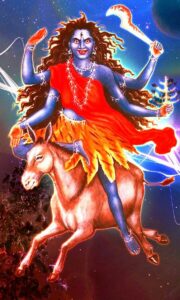
Different regions of India celebrate Day 7 of Navratri with unique traditions while invoking Maa Kalaratri’s fierce and protective form.
1. North India
- Devotees observe fasts and worship Maa Kalaratri with incense, lamps, and flowers.
- Large pandals in cities like Delhi, Varanasi, and Lucknow host grand Durga Puja rituals.
- The story of Ramlila (Ram’s battle against Ravana) continues on stage alongside Navratri worship.
2. Madhya Pradesh & Uttar Pradesh
- The worship of Chamunda Mata (another name of Maa Kalaratri) is very popular.
- Devotees gather in large groups at temples and perform aarti with lamps and bells.
3. West Bengal
- In Durga Puja, this is the day when Goddess Durga is worshipped in her fierce warrior form.
- Devotees chant “Jai Maa Durga!” and offer meat, liquor, and red hibiscus flowers as traditional offerings to her fierce aspect.
4. Maharashtra & Gujarat
- Day 7 marks intense Garba and Dandiya Raas dances performed late into the night.
- Women wear green-colored attire and offer prayers to Maa Kalaratri before joining the celebrations.
5. South India
- In Tamil Nadu, Karnataka, and Andhra Pradesh, devotees decorate the Kolu (Golu dolls) with fierce goddesses on this day.
- Special pujas and recitations of the Devi Mahatmyam are done in temples.
6. Himalayan Regions
- In Himachal Pradesh and Uttarakhand, devotees perform Jagrans (night-long devotional singing) dedicated to Maa Kalaratri.
- Her fierce form is invoked for protection against natural calamities.
Food and Prasad on Maa Kalaratri – Day 7 of Navratri
- Devotees usually offer jaggery-based sweets, as Maa Kalaratri is believed to be fond of jaggery.
- Some prepare jaggery halwa or chana-jaggery prasad.
- Fasting devotees break their fast in the evening with fruits, kheer, and jaggery offerings.
Conclusion : Maa Kalaratri – Day 7 of Navratri
The worship of Maa Kalaratri on the 7th day of Navratri holds immense spiritual and practical importance. She represents the fierce power of the Divine Mother who destroys ignorance, fear, and evil, while also showering her devotees with blessings of courage, peace, and protection.
Though her form appears terrifying, she is lovingly known as Shubhamkari, the one who brings auspiciousness and positivity into her devotees’ lives. Her blessings are especially sought for overcoming fear, negative energies, and challenges of life.
By sincerely performing her puja, chanting her mantras, and meditating on her form, devotees can not only protect themselves from external troubles but also win the battle against their inner darkness. Maa Kalaratri reminds us that beyond fear lies freedom, and beyond destruction lies rebirth and spiritual awakening.
20 (FAQs) about Maa Kalaratri – Day 7 of Navratri

1. Who is Maa Kalaratri – Day 7 of Navratri ?
Maa Kalaratri is the seventh form of Goddess Durga, worshipped on the seventh day of Navratri. She is the fiercest form of the Goddess, known as the destroyer of darkness and evil.
2. Why is Maa Kalaratri – Day 7 of Navratri called Shubhamkari?
Although she appears fierce and terrifying, she blesses her devotees with auspiciousness (shubham), peace, and positivity, hence she is called Shubhamkari.
3. What is the significance of worshipping Maa Kalaratri – Day 7 of Navratri ?
Her worship removes fear, protects from negativity, grants courage, and helps devotees overcome obstacles in life.
4. What does the name “Kalaratri” mean?
Kala means time or death, and Ratri means night or darkness. Together, it signifies the goddess who destroys the darkness of fear and ignorance.
5. How is Maa Kalaratri – Day 7 of Navratri depicted in scriptures?
She has a dark complexion, rides a donkey, has disheveled hair, fiery eyes, and breath that emits flames. She holds a thunderbolt (vajra) and a sword, while showing blessing and fear-dispelling gestures.
6. What color is associated with Day 7 of Navratri?
The auspicious color for Day 7 is white or blue, symbolizing peace, calmness, and the destruction of negativity.
7. What offerings are made to Maa Kalaratri?
Devotees offer jaggery, jaggery-based sweets, honey, dry fruits, and jasmine flowers.
8. Which mantra is chanted for Maa Kalaratri?
The main mantra is: “ॐ देवी कालरात्र्यै नमः” (Om Devi Kalaratryai Namah).
9. What is the story of Maa Kalaratri and Raktabeeja?
Raktabeeja had a boon that every drop of his blood would create another demon. Maa Kalaratri drank all his blood before it touched the ground and destroyed him.
10. What are the benefits of chanting her mantras?
Chanting her mantras removes fear, protects from evil, ensures success, strengthens determination, and provides spiritual growth.
11. Is Maa Kalaratri the same as Chamunda?
Yes, after slaying the demons Chanda and Munda, Maa Kalaratri was given the name Chamunda.
12. How does Maa Kalaratri help in astrology?
Her worship reduces the malefic effects of Saturn (Shani) and grants relief from struggles caused by planetary influences.
13. What is the significance of her mount, the donkey?
The donkey represents humility and simplicity, symbolizing that true divinity transcends luxury and pride.
14. How do devotees worship Maa Kalaratri?
They perform puja with flowers, incense, a ghee lamp, offer jaggery, chant mantras, and perform aarti. Fasting and charity are also observed.
15. Can Maa Kalaratri’s worship remove inner fears?
Yes, her worship is especially believed to conquer deep-rooted fears, phobias, and anxieties, granting peace of mind.
16. Why is Maa Kalaratri worshipped during Navratri?
Each day of Navratri honors a form of Durga. On Day 7, Maa Kalaratri is worshipped to help devotees progress from material desires to spiritual awakening.
17. What spiritual lessons does Maa Kalaratri teach?
She teaches that one must confront and destroy their inner demons (fear, ego, greed, anger) to achieve liberation.
18. Where are major temples of Maa Kalaratri – Day 7 of Navratri ?
She is worshipped across India, but famous temples include Chamunda Devi Temple in Himachal Pradesh and Kalratri Temple in Madhya Pradesh.
19. What should devotees eat on Maa Kalaratri – Day 7 of Navratri ?
Fasting devotees usually eat fruits, jaggery-based prasad, kheer, and light sattvic meals after puja.
20. What blessing does Maa Kalaratri – Day 7 of Navratri give her devotees?
She blesses her devotees with fearlessness, courage, health, prosperity, protection, and liberation from negativity.
